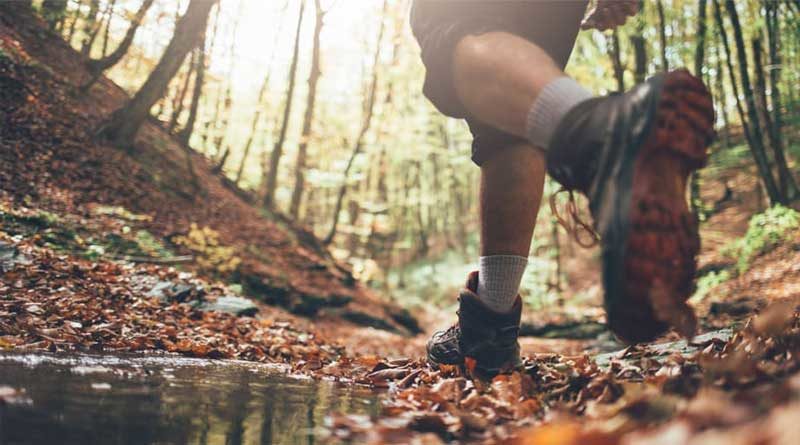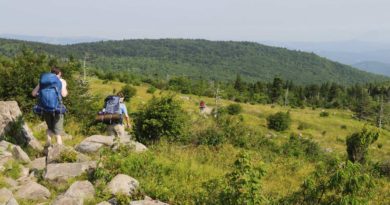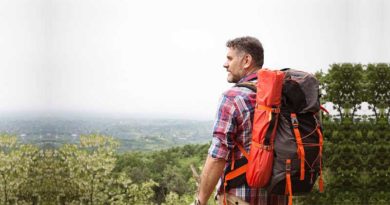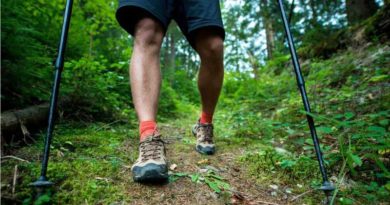How To Tell If Hiking Boots Are Too Big?
Hiking boots are among the essentials to have a good hiking experience. They keep the feet protected from harsh terrains. These boots can only do their job if they fit properly. Now, small boots are easy to recognize as they feel uncomfortable even after a few minutes of wearing and moving around. However, hiking boots that are too big are usually a bit hard to recognize for some people as they don’t cause immediate discomfort. However, they do cause problems in the long run.
Why Hiking Boots are Important?
As the name implies, these boots are made for hiking. Yes, you can hike in regular boots as no one can stop you from doing that but you might not like the results. Sore feet, blisters, ankle pain, and you might even lose your favorite pair of shoes as they would break quickly under the demanding circumstances that hiking puts on them. Hence, the necessity of hiking shoes that are specially made to provide comfort and the ruggedness to withstand the harsh conditions of rough and uneven terrains becomes important. There are several hiking boots to choose from on the market ranging from light trail shoes all the way up to mountaineering shoes.
Why Fit Matters?
Hiking boots should fit perfectly otherwise they will cause some problems. A bigger boot would feel uncomfortable while walking on a flat surface. You feel like dragging the weight of the shoe separately as your feet dangle inside. Furthermore, it will give you this uncomfortable feeling that your shoe might fall off at any time. Bigger boots also cause blisters on the ankle and heel of the foot. Also, they hurt the toes as the foot moves forward in the shoe and the toes hit the front wall. This problem is amplified while going downhill. Hiking up and downhill is already hard enough. So, getting a nicely fitting shoe is important to keep your hiking adventure comfortable. Otherwise, dealing with painful feet is an added burden, therefore, a nice fit is necessary.
Your Shoes are Too Big if…
- You lace them tight and your foot still moves side-to-side or forward and backward. The fit of the boot shouldn’t be too tight as if it’s squeezing the foot. It should be a moderately snug fit with the toes being kept in place.
- You don’t get ankle support even when you tightened the laces.
- A major feature of hiking boots is to provide adequate heel and ankle support. In a bigger boot, the foot doesn’t get enough support in these areas. A dangling foot causes friction in these areas which causes blister formation. If the boot is causing you blisters in this manner then you may want to try out a smaller size.
- There is pain while going downhill. Toe pain while going downhill is also a sign of small shoes squeezing on the toes. It makes it harder to identify whether the shoe is big or small. However, in a big shoe, the foot shits forward going downhill causing toe pain.
How to Avoid Buying Bigger Boots?
Here are some tips that can help you avoid buying bigger hiking boots.
Measure Your Feet
You can either go to a shoe store, such as your nearest REI, to get your feet measured or measure your feet yourself. Measuring your feet at home will also save you some time and money. You can measure your feet like so:
- Put your foot flat on a straight surface with a large piece of paper under the foot.
- Take a pencil or a marker and draw an outline around the foot
- Draw a rectangle around the outline of the foot and measure the length of the rectangle using a ruler from the toes to the heel.
- Compare the size you get with the standard sizing of different brands and see where you can find the size that will fit you.
- Measure both feet separately as there is a difference between the measurements of one foot from the other.
Try on the Boots
It is recommended that when you go buying shoes, you wear the same pair of socks and pants that you are going to wear during the hike. If you intend to wear multiple pairs of socks, then bring the thickest and thinnest pair that you will have during the hike. After wearing the shoe, you should be able to wiggle your toes without touching the front wall of the toe box. That being said, if there is space of a full thumb width between the big toe and the front wall of the toe box, then the shoe is bigger for you.
Furthermore, you can also try and roll your foot forward, backward, up, and down inside the boot repeating a few times. If your feet move inside the boots with your toes pushing on the wall of the toe box or your heel moves up and down in the boot, then the boot you are wearing may be too big for you and may cause you blisters when you walk for a long time in them.
Another trick is to find a ramp in the shoe store and walk on it to see if the boot might cause any problems walking up or downhill. Your foot should stay in position while walking up or down the ramp. If your feet move inside the boots, the boots might be too big and may cause you blisters as mentioned above. Also, if you get the chance, not only should you walk inside the store, but try taking a stroll in the boots walking at various speeds to properly check them before buying and see if they cause any problems.
Extra Measuring and Sizing Tips
- Women having a hard time finding the right fit for their feet should try men’s shoes and vice versa.
- Visit the shoe store at night. That is when the feet and legs are most swollen giving you a chance to buy boots that will stay comfortable even during long hikes.
- Avoid purchasing online. Try to purchase from a physical store. Bring the socks that you will wear on the hike as mentioned above.
What to do if you get Bigger Boots?
If you get a bigger pair of boots, then get them replaced. But sometimes you can end up in a position where getting the boots replaced is not an option. This can happen if a pair of boots seem to fit perfectly in the store without causing any problems. But you find out later on in the middle of the trail that the boots you are wearing are too big. At this point, you would have to cope as the boots can’t be replaced. In that case, here are a few tips that might help:
- Put on extra pair of socks. Extra padding might help in compressing the parts of the feet that are causing problems.
- Try placing the pads from your blister kit strategically. It will build up the volume of your feet so that they stay in place.
- Tightening the laces with extra force can also give a relatively better fit.




